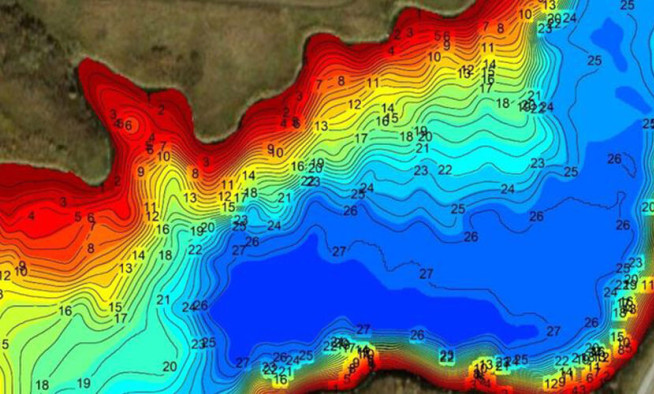Economic & Demographic Trends on the Lower & Outer Cape
The Lower and Outer Cape, comprised of the towns of Chatham, Harwich, Brewster, Orleans, Eastham, Wellfleet, Truro, and Provincetown, is a highly desirable vacation, second home, and retirement destination.
Commission Chief Planner Chloe Schaefer recently presented data on the subregion's economic and demographic trends to the Lower Cape Community Development Partnership’s Board of Directors. Data shows that the Lower and Outer Cape population is aging. The population is significantly older than the region and the state, ranging from 17 to 23 years older than the state median age, depending on the town. Seasonality drives the economy. Monthly employment in July is 65% higher than monthly employment in February, and most of those living in the area work elsewhere. For year-rounders making an average wage, home ownership is very much out of reach. The gap between the income needed to affordably purchase a home and median household incomes is large – more than $100,000 in all towns, and more than $250,000 in Chatham, Orleans, and Truro.
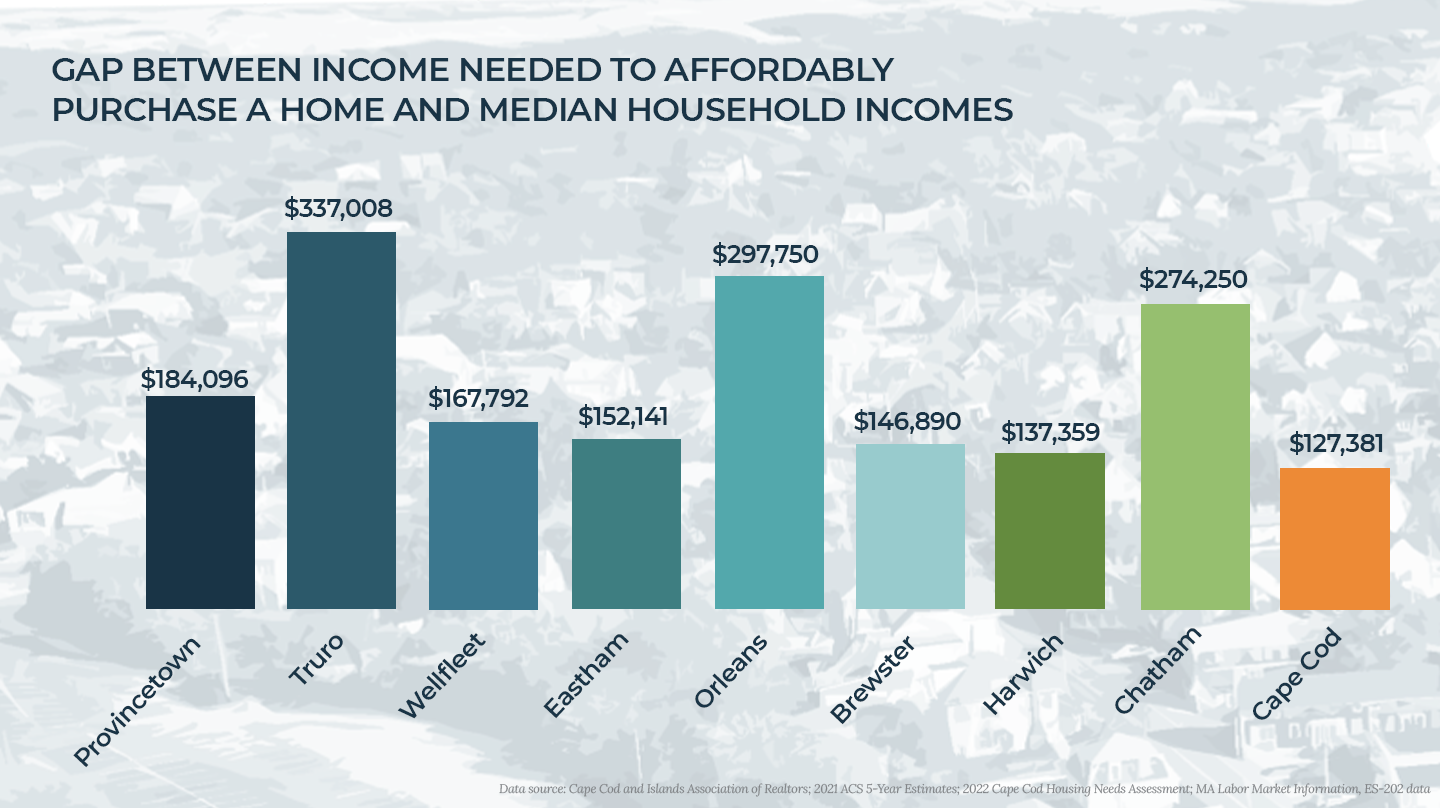
Population
The Lower and Outer Cape towns experienced some of the highest proportional increases in year-round population in the region from 2010 to 2020, but at the same time, the proportion of the population under 18 declined from 13.8% to 11.5%, and enrollment in Lower and Outer Cape schools decreased by 9% in the past ten years.
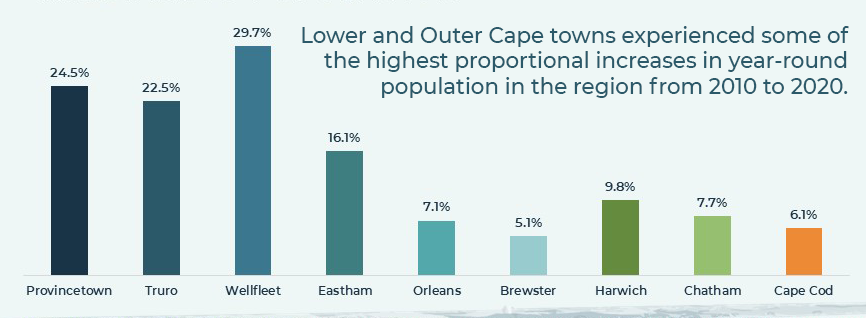
Housing
Housing in Lower and Outer Cape towns is expensive and out of reach for many of the area’s wage earners. Lower and Outer Cape towns have some of the highest percentages of seasonally-used housing units – more than half (51.5%) of the towns’ units are seasonal and the income needed to affordably purchase a median-priced single-family home far exceeds average wages and median household incomes.
For example, the median sales price for homes in Truro, Orleans, and Chatham exceeded $1 million in 2022. To affordably purchase a home at that price, residents need to make more than $350,000 per year, yet the average median income in those towns is between $79,000 and $88,000.
Those who rent on the Lower and Outer Cape are struggling. More than half of renters are housing cost burdened – spending more than 30% of their income on housing - in Provincetown, Brewster, and Orleans.
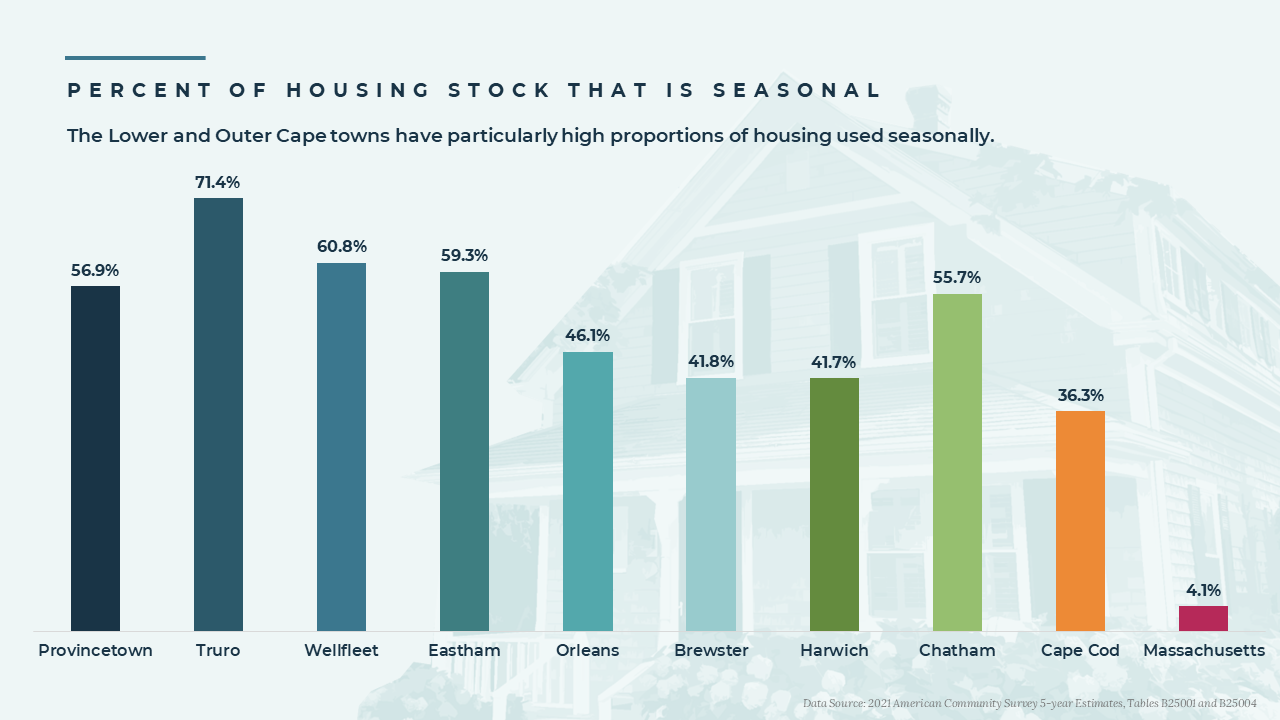
Income & Employment
Most of the people who live in Lower and Outer Cape towns commute outside the subregion for work. Employment in Lower and Outer Cape towns is highly seasonal and concentrated in industries related to the visitor and second home economy.
Average wages tend to be much lower than household income, suggesting that many households are comprised of multiple earners, people are working multiple jobs, or have other sources of income.
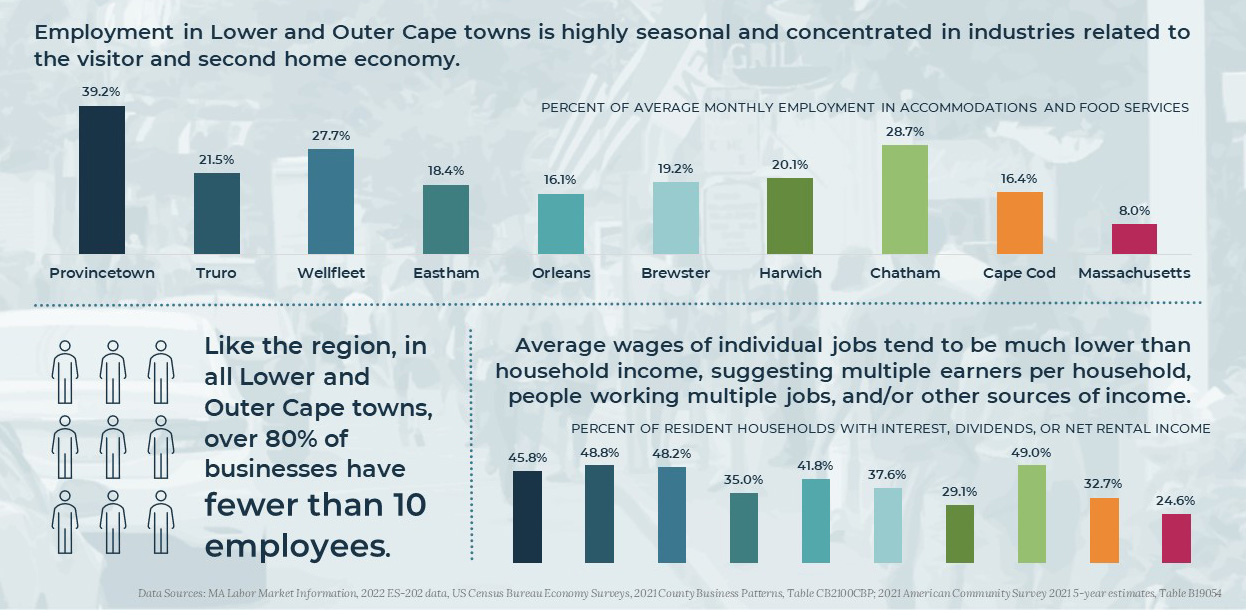
The seasonality, expense, and changes in demographics in the Lower and Outer Cape exacerbate the housing challenges experienced throughout the region. Bold action is needed to ensure that those working in the region can afford to live there.
Commission staff are currently analyzing Mid and Upper Cape data. Explore economic, demographic, and housing trends across the region by visiting www.datacapecod.org
Related Posts

